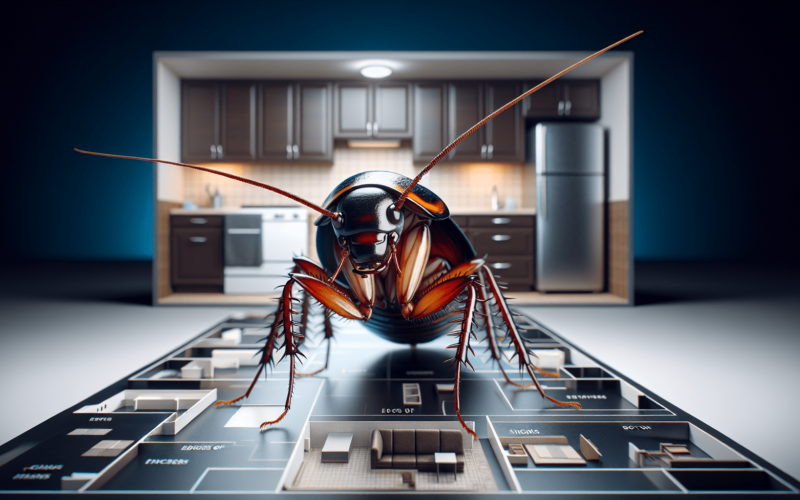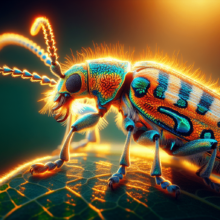Explore the fascinating world of insects and discover their shared characteristics, from their unique exoskeletons to diverse lifestyles. Uncover the commonalities!
What Is The Hardest Bug To Get Rid Of In Your House?

What if you find yourself struggling to get rid of a bug that just won’t leave your home? Many of us have faced the frustration of dealing with pests, but some can be particularly stubborn to eliminate. In this article, you’ll learn about the hardest bugs to get rid of in your house and some practical steps you can take to handle them effectively.

Understanding Pest Resistance
Before we dive into the specific bugs that are most difficult to eradicate, it’s important to understand why some pests are more challenging to deal with than others. Pests can develop resistance to certain methods of extermination, whether through pesticides or environmental changes. This resistance can evolve due to various factors, from their rapid reproduction rates to their ability to hide in hard-to-reach places.
Why Do Some Bugs Resist Elimination?
Pests that are hard to remove often have adaptive traits that facilitate their survival. High reproduction rates mean that even if a significant number are killed, enough may survive to repopulate quickly. Additionally, many bugs are good at finding shelter, meaning they can elude traps and treatments. Understanding these traits is essential if you want effective strategies to combat them.
Common Characteristics of Stubborn Pests
Stubborn pests tend to share some common characteristics:
- Rapid Reproduction: Many resistant pests reproduce quickly, leading to population explosions.
- Hardiness: Some insects can survive in various conditions, making them difficult to control.
- Hiding Skills: Resilient pests often find clever hiding spots in your home, making them hard to reach.
The Most Difficult Bugs to Get Rid of
While several pests can cause headaches in your home, here are some that stand out when it comes to difficulty of elimination.
Cockroaches
Overview
Cockroaches are infamous for their ability to thrive in nearly any environment. With around 4,500 species worldwide, you might most commonly encounter the German cockroach, American cockroach, or Oriental cockroach.
Why They’re Difficult
- Survival Skills: Cockroaches can ingest a wide range of substances for energy and can survive without food for a month.
- Rapid Reproduction: A female cockroach can produce up to 40 offspring at once every few weeks.
- Hiding Skills: They can squeeze into cracks as small as 1/16th of an inch, allowing them to hide almost anywhere.
Bed Bugs
Overview
Bed bugs are small, flat insects that feed on the blood of humans and animals. They’re mainly active at night and rely on their hosts for sustenance.
Why They’re Difficult
- Reproduction Rate: Female bed bugs can lay 200-500 eggs in a lifetime, leading to rapid infestations.
- Resistance to Insecticides: Many bed bugs have developed resistance to common insecticides, making them hard to eliminate.
- Stealthy Feasting: They often hide in mattresses, box springs, and even small crevices, making early detection challenging.
Termites
Overview
Termites might not seem like a threat at first, but they can cause significant structural damage to your home. They feed on wood and are often called “silent destroyers.”
Why They’re Difficult
- Colony Size: A single termite colony can contain thousands to millions of individuals, so even if you kill some, many more remain.
- Hidden Damage: Since they feed on wood from the inside out, the damage often goes unnoticed until it becomes severe.
- Long Lifespan: Termites can live for several years, allowing them ample time to consume wood and cause damage.
Ants
Overview
Ants are social insects that live in colonies and can invade homes in search of food. There are various species, including carpenter ants, sugar ants, and fire ants.
Why They’re Difficult
- Large Colonies: Large colonies make it challenging to eliminate entire populations.
- Adaptability: Ants can find alternate food sources and nesting locations, making traps and pesticides less effective.
- Communication: Ants communicate effectively, allowing them to alert the colony to dangers, which can lead to changes in their behavior and evasion of traps.
Effective Strategies for Pest Control
Now that you know which bugs are the toughest to deal with, let’s explore some practical strategies to combat them.
Prevention Measures
Cleanliness is Key
Keeping your home clean is a crucial step in pest prevention. Regular cleaning helps eliminate food sources and potential nesting sites for pests.
- Kitchen: Wipe down surfaces, store food in airtight containers, and regularly clean up crumbs.
- Living Areas: Vacuum carpets and upholstery frequently, and keep clutter to a minimum.
Seal Entry Points
Identify and seal any cracks or openings that could allow pests to enter your home. Use caulk or weather stripping to close gaps around windows and doors.
Pest Control Methods
Chemical Treatments
For stubborn pests, chemical treatments can be effective, but they must be used cautiously.
- Insecticides: Select the appropriate insecticide for the specific pest you are dealing with.
- Baits and Traps: Using baits that attract the pest can effectively reduce populations over time.
Non-Chemical Treatments
Sometimes, you might prefer non-chemical methods for pest control.
- Diatomaceous Earth: This natural powder can effectively kill insects by dehydrating them. Sprinkle it in areas where pests are prevalent.
- Essential Oils: Some essential oils, like peppermint or tea tree oil, can repel certain bugs when used in sprays.
When to Call a Professional
If you find yourself overwhelmed by a persistent bug problem, it may be time to call in a pest control professional. They can assess the situation, use specialized treatments, and provide long-term solutions tailored to your specific pest issues.
The Emotional Toll of Pest Infestations
Dealing with stubborn bugs can take an emotional toll. The stress of an ongoing infestation can disrupt your peace at home, making it essential to address these challenges proactively.
Identifying Your Triggers
Acknowledging how a pest problem impacts your well-being can be an important first step in managing your feelings. Create a plan to address the issue, feel more in control, and reduce any anxiety associated with the problem.
Finding Support
You don’t have to go through this alone! Reach out to friends or family who have experience dealing with similar issues. Sharing your experience might help alleviate some of the stress.
Conclusion
It can be incredibly frustrating to confront persistent pests in your home. Understanding which bugs are hardest to get rid of and why they resist extermination gives you the knowledge needed to tackle the problem head-on. Yes, bugs like cockroaches, bed bugs, termites, and ants can be tough adversaries, but with preventive measures, effective strategies, and sometimes professional help, you can reclaim your space.
As you take steps to manage or eliminate troublesome bugs, remember that it might take time and patience. Stick to your plan, make adjustments as necessary, and create a clean and welcoming environment. Doing so can not only reduce the chance of infestations but also create a more comfortable home for you and your loved ones.



